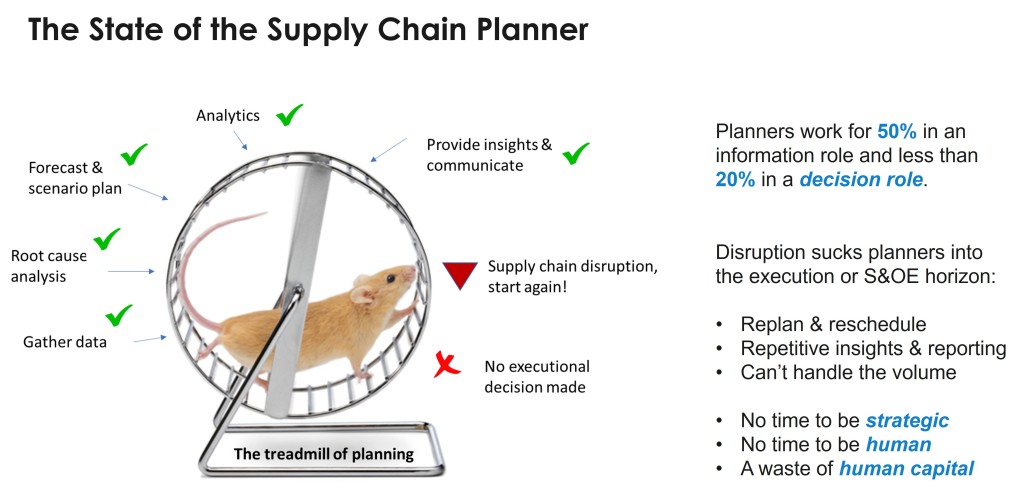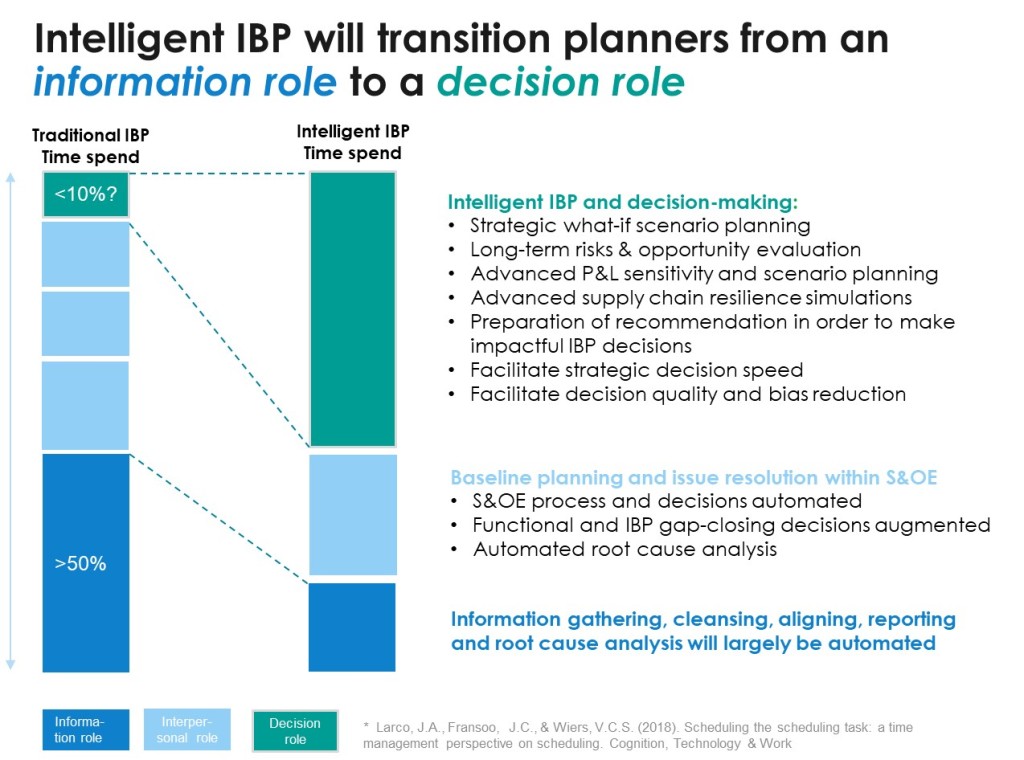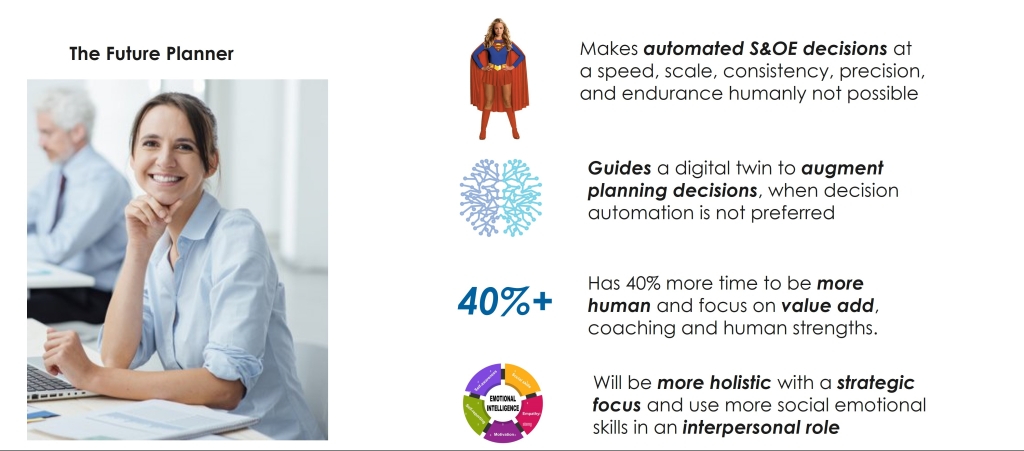Preview – Most IBP cycles around the world are based on a 20-year-old process definition supported by 20-year-old planning concepts. This traditional IBP is not set up for a fast-changing world, where speed of decision making confers a competitive advantage. Intelligent automation will change this. In this series of short blogs, I will discuss the transition of traditional IBP towards a more intelligent IBP. You can read the first blog here. In this blog: Unshackle the Planners
Locked in the planning treadmill
In traditional IBP, planners live in this never-ending cyclical treadmill to get ready for the next meeting. Trust me, I’ve done it for years. Often, you’re lucky to get the IBP deck out in time, without having any quality time to make simulations or prepare quality decisions.
This is the case, because planners spend between 30%-50% on data gathering, tinkering, analysis, extracting insights, making an IBP deck, before having the chance of running a simulation or preparing a decision. They play an information role rather than a decision role. Even planners in companies that run so called ‘best practice’ IBP, will tell you privately that it is a never-ending monthly race.
The relentless IBP cycle, with its meetings and pre-meetings, means planners have to commit to prepare for the pre-meeting and then replan for the real meeting, all while trying to keep stakeholders aligned. Then they have to spend all that time in IBP meetings, that easily can take four to eight hours.

How can we explain to smart new graduates, having worked with all new types of technologies in university, that this is going to be their job as supply chain planner? This has to change if we want to attract and retain talent into the supply chain.
Transition of the planner’s role
With Intelligent Automation, 42% of work can be automated and 26% can be eliminated. New systems of intelligence will free up planner’s time by largely automating the planning process and the information role. The planner can focus more on their decision role, be more human and be more strategic.
With Intelligent IBP, a planner’s role will transition from an information role to a decision role. Planners will focus on more strategic and advanced scenario planning, and facilitate strategic decision speed and quality.

In a 2014 blog, I highlighted that the highest maturity level of IBP is emotional competence. This is required to get the best value out of the IBP discussion we have, managing different views and manage conflict to get the best decision outcome for the business. The problem has always been that the planner simply didn’t have time to do anything else than the information role. That will finally change.
Deloitte now estimates that over 30% of highly paid jobs are social by nature. And McKinsey estimates a 24% rise in demand for social and emotional skills by 2030.
The Kuehne Logistics University identified that more holistic strategic and human roles will emerge for planners. In their words; ‘By automating the repetitive, reactive, and manual tasks within the planning process, the planner of the future concentrates on strategic and predictive tasks that require human capabilities’.
Many of us have been in IBP meetings where all the information and analysis was on the table, but a decision wasn’t made. And if a decision was made, it was likely influenced by groupthink or other biases. A well-structured decision process that reduces decision bias, matters more than analysis—by a factor of six.
Therefore, an important social and emotional capability that an IBP team will need to start developing, is facilitating (speedy if required) decision making, whilst reducing decision biases.
The future planner will become a superhuman in the S&OE horizon, where most decisions will be automated, will guide an intelligent agent to augment IBP decisions and will have more time to be strategic, human and focus on high quality decisions.

A new planning mindset
In a 2017 Foresight article, I highlighted the importance of effective individual and company mindset on IBP performance. This remains valid in the transition to a more autonomous planning environment with a focus on the decision role.
It is interesting to think that the machine can give planners the opportunity to become more human again. To fully realize the benefits of new systems of intelligence, and to benefit from Kasparov’s law, planners also must embrace human-machine collaboration.
This requires a new mindset, both for the enterprise and the planner. Enterprises need to rethink the impact of intelligent automation on their operating models, organizational designs, IBP team set-up, skill sets and incentives. Planners will need to keep an open mindset to embrace new technology, develop new skills, grow their emotional competence, and transition to a decision role.
With intelligent automation, the future of work for the supply chain planners supporting an IBP process will look very different than today. It will unshackle planners from the monthly IBP treadmill and free up their time to become more human again and at the same time work on solving more strategic, interesting and engaging problems.
How this impacts decision making in Intelligent IBP, I will discuss in the next blog


7 thoughts on “Intelligent IBP – Unshackle the Planners!”